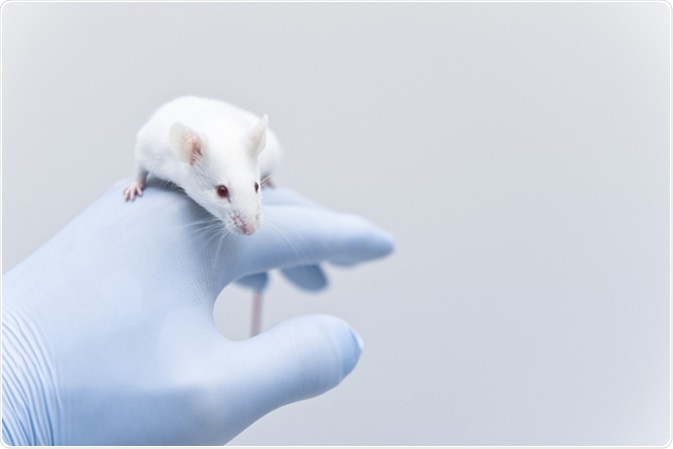Knockout mice are animals that have been genetically modified for so that one or more genes are not expressed, or “knocked out.” Studies are then carried out on the mice to determine what the effects of a loss of the gene have on the animal, or the effects of drugs and other therapies.

Image Credit: unoL / Shutterstock
Gene editing technology has been shown to have advantages over older genetic engineering techniques for producing knockout mice. Gene editing technologies that have been successfully used for this purpose include zinc finger nuclease (ZFN), transcription activator-like effector nuclease (TALEN), and clustered regularly interspaced short palindromic repeats (CRISPR) nuclease.
The CRISPR-cas9 system in particular has become a preferred approach for mouse genome engineering. The usual way of introducing the CRISPR components into mouse embryos to edit or knock out a gene is by microinjection. However, microinjection requires a high level of skill and is labor intensive because embryos must be injected one-at-a-time.
Mice "Tales"...the Knockout Mouse Production and Phenotyping Project
A New Technique
An electroporation method has been developed by researchers in Japan as an alternative for delivering gene editing elements into an embryo called “Technique for Animal Knockout system by Electroporation (TAKE).” This method efficiently introduces the reagents into mouse zygotes with no need for special handling skills and no damage to the zona pellucida (a glycoprotein layer surrounding the plasma membrane) of the embryo, which is often the case with conventional electroporation.
The scientists introduced ZFN, TALEN, and CRISPR mRNA into rat embryos using the Super Electroporator NEPA 21 using a three-step pulse system. In the first step, the pulse creates micro-holes in the zona pellucida and plasma membrane of the embryos. In the next step, a different set of pulses drive the mRNA into the cytoplasm through the micro-pores. In the third step, polarity is changed to complete transfer of mRNA into the embryos. They also microinjected the mRNA for comparison.
Positive Results
After electroporation, embryos at the 2-cell stage were transferred into surrogate female rats. Ten percent of embryos microinjected with ZFN mRNA developed into offspring, and 33 percent of those had correct editing of the target gene. In contrast, 31, 24, and 6 percent of embryos electroporated with 0.5 ms, 1.5 ms, and 2.5 ms pulses developed into offspring, with correct editing of the target gene in 37, 73, and 75 percent of offspring.
Similar positive results were achieved with TALEN and CRISPR-cas9 editing systems.
In order to confirm germline transmission, some knockout rat offspring derived from embryos electroporated with ZFN mRNA with a 1.5 ms pulse width were mated with wild type rats, and the next generation of offspring was analyzed. They found that their method successfully produced germline transmission of the gene knockout.
The researchers concluded that their method was simple and effective compared to convention electroporation methods that weaken or remove the zona pellucida. The use of electroporation also allows generation of knockout animals in strains and species that do not have established embryonic stem cell lines, which is necessary in conventional methods.
References
- Electroporation: An alternative to microinjection for creating genetically modified rodents, https://www.idtdna.com/pages/education/decoded/article/electroporation-an-alternative-to-microinjection-for-creating-genetically-modified-rodents
- Simple knockout by electroporation of engineered endonucleases into intact rat embryos, https://www.nature.com/articles/srep06382
- Efficient delivery of DNA and morpholinos into mouse preimplantation embryos by electroporation, https://www.wsj.com/articles/the-real-reason-ford-is-phasing-out-its-sedans-1525369304
Further Reading